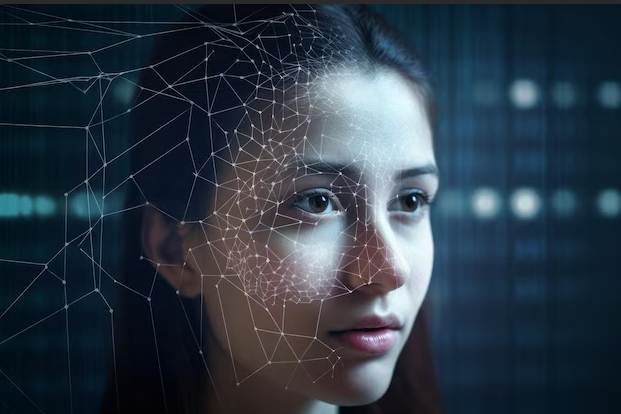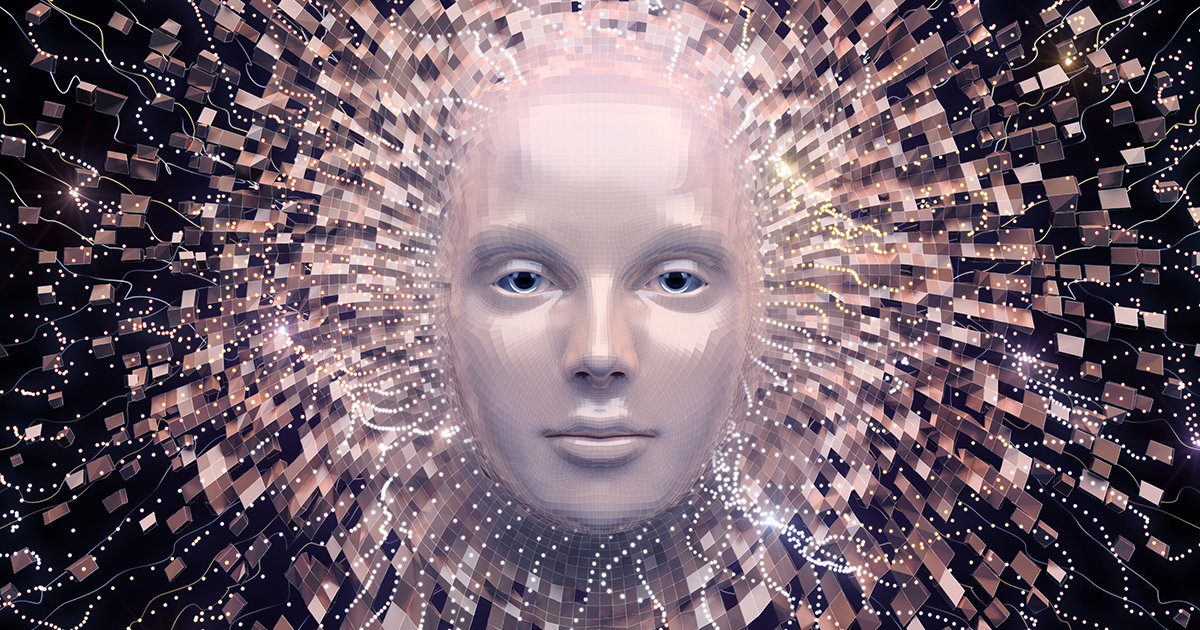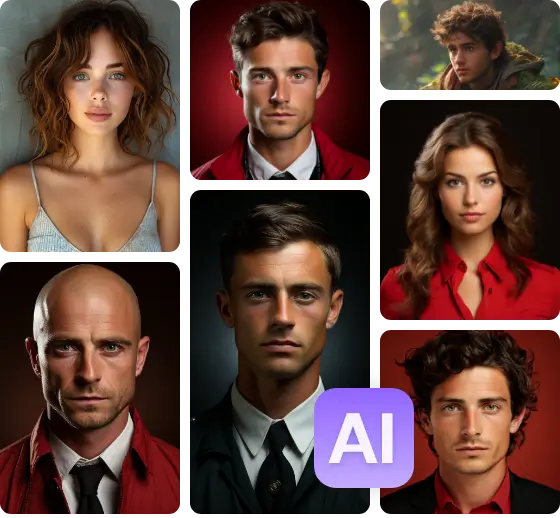AI has exposed tons of possibilities to the world. People in various fields and industries have benefited from the revolutionary perks of AI’s different applications. One of them is image generation. To narrow it down, we’d like to specifically talk about the AI Face Generator, the one that has been bustling as a hot topic recently.
A face generator can help its users produce realistic, human-like faces. Our face generator AI works fast. It will only take a few seconds to generate the realistic human face that you can download for free. But have you ever wondered about how it works? Let’s get down to it.

Understanding Neural Networks and Deep Learning in Face Generation
The concept of neural networks is the meat of the technology. It is a set of algorithms that put in an effort to learn a set of data through a complicated process, which then mimics how the human brain works.
Neural networks are like digital brains. They learn from lots of information to understand patterns and predict what might happen next. That’s why they’re so important in AI and machine learning!
Deep learning, a type of machine learning, is key to making face generator AI work. This tech learns from patterns in data by training complex neural networks with many layers of connected nodes. It looks at existing pictures and creates new ones.
Using deep learning, AI can create lifelike faces, beautiful landscapes, and stunning artwork. It’s super accurate and creative, showing the power of AI in our world.
What makes the result incredible: the training process
Training an AI to generate faces starts with giving it a bunch of human faces to learn from. We make sure the faces are clear and free of distractions so the AI can focus. Then, the AI starts learning by looking for patterns in the faces.
As it learns, the AI gets better and better with feedback. It tweaks its settings little by little to make the faces it creates look more real. Over time, the faces it makes become more detailed and lifelike.
The main goal of training this AI is to make faces that look just like real ones. This takes a lot of computer power and time. To get even better, the AI uses something called generative adversarial networks (GANs).
These networks have two parts: a generator that makes images and a discriminator that checks how real they look. By using this clever setup, the AI keeps improving, aiming to make its faces as accurate and lifelike as possible.
As technology gets better, these AI face generators will keep improving. They’ll make images that are even harder to tell apart from real faces. With these advancements, they could change how we do things in areas like entertainment and art.

Face Generator AI Architecture
There are multiple layers in the Face Generator AI architecture. These components utilize sophisticated algorithms and neural network to assure the high-end results of the face image generation by AI.
The Mastermind: Generator
Imagine a digital artist sitting at the heart of this system, meticulously crafting facial images from scratch. This is the generator, the creative powerhouse behind the scenes. It’s armed with a wealth of knowledge gained from extensive training, allowing it to assemble digital portraits with precision. By studying heaps of data, the generator learns the intricacies of facial features, piecing together images that look strikingly real.
The Judge: Discriminator
But wait, there’s a discerning critic in the mix – the discriminator. This component works hand in hand with the generator, tasked with evaluating the authenticity of the images produced. Its job? To separate the masterpieces from the mishaps. If the results fall short of perfection, the discriminator provides feedback, nudging the generator to refine its craft. This dynamic duo ensures that the AI model continually improves, fine-tuning its output over time.
The Transformer: Encoder and Decoder
Now, let’s delve into the nitty-gritty with the encoder and decoder. Think of the encoder as the gatekeeper, prepping the input data for the AI model. It works its magic, condensing raw information into a compact representation known as a latent space. This condensed version holds all the essential details of the input images, streamlining the process for the rest of the neural network.
And here comes the decoder, the unsung hero that completes the picture. Teaming up with the encoder, it breathes life into the latent space, transforming abstract data into fully-formed facial images. With its clever decoding algorithms, the decoder adds the finishing touches, infusing subtle features and intricate details. This meticulous reconstruction gives users the power to customize and tweak the generated faces to their heart’s content.
Bringing It All Together
In essence, the face generator AI is a symphony of interconnected parts working in harmony. Each component plays a vital role, contributing to the creation of images that are almost indistinguishable from reality. From the creative genius of the generator to the critical eye of the discriminator, every element plays a part in crafting digital artistry that dazzles the senses.
And the best part? This technology isn’t just for show. With its wide-ranging applications, from entertainment to research, face generator AI is shaping the future of digital imagery. So, the next time you encounter a lifelike face in your digital wanderings, remember the magic happening behind the scenes. It’s a testament to the ingenuity of AI and the boundless possibilities it holds.

How Generative Adversarial Networks Generate Such Realistic Face Images
Have you ever wondered how those stunningly realistic face images are created by computers? Well, the secret lies in a cutting-edge technology called Generative Adversarial Networks (GANs). Don’t worry if the term sounds a bit fancy – we’ll break it down for you in simple terms.
Dueling Creativity: The Battle of Creator and Discriminator
Imagine two talented artists competing against each other to create lifelike pictures. That’s exactly what happens in GANs. There are two main players here: the creator and the discriminator. They’re like the Batman and Joker of the digital world, constantly trying to outsmart each other.
Step-by-Step Synthesis: Bringing Pixels to Life
So, how does the creator make those amazing faces? It all starts with a bunch of random pixels. Bit by bit, the creator adds features to these pixels, slowly shaping them into a face. With each addition, the image becomes more and more like a real person. It’s like watching a painting come to life!
Spotting the Fakes: The Discriminator’s Job
Now, let’s talk about the discriminator. Its job is to spot the fake faces created by the creator. To do this, it looks at a bunch of real and fake faces and learns to tell them apart. It’s like having a super detective with an eye for detail.
Rewarding Good Work: Punishing and Improving
When the fake faces start looking too real, the discriminator steps in and says, “Hey, that’s not fair!” It punishes the creator by pointing out its mistakes. But don’t worry – it’s all in good fun. This feedback helps the creator improve its technique, making the faces even more realistic.
Getting Better with Time: Iterative Refinement
With each training session, the creator gets better at its job. It learns from its mistakes and refines its methods until it’s almost impossible to tell the fake faces from the real ones. It’s like watching an artist grow and evolve with each stroke of the brush.
Tips for Unleashing Your Creativity with Face Generator AI
Now that you know the secrets behind AI-generated faces, it’s time to dive in and create your own masterpieces. Here are a few tips to get you started:
- Choose the Right Tool: Find a face generator AI tool that suits your needs and preferences. Look for one with a user-friendly interface and a supportive community.
- Learn the Basics: Take some time to understand the fundamentals of AI, like neural networks and machine learning. It’ll help you make sense of how face generator AI works.
- Experiment with Styles: Don’t be afraid to try out different artistic styles and techniques. Explore facial features, expressions, and proportions to create unique and realistic images.
- Stay Updated: Keep up with the latest developments in AI and digital art. There’s always something new to learn, so stay curious and open-minded.
Conclusion
In summary, the face generator AI is an incredible technological achievement that has immense potential. Using advanced techniques like neural networks and deep learning, it can change how we see things online and in various industries. But it’s crucial to think about ethics when using this technology, making sure it’s used responsibly for good purposes in our society.
